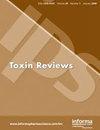Himalayan poisonous plants for traditional healings and protection from viral attack: a comprehensive review
IF 2.4
4区 医学
Q2 TOXICOLOGY
引用次数: 2
Abstract
Abstract The goal of the evaluation of the current review is to offer a report on toxic vegetation with healthful properties and plants that are accustomed to treat infectious agent diseases (antiviral properties). Use of plants is as old as mankind, even then poisonous plants come under the most underrated category of plants all over the world and used less often due to folklores about their adverse effects. Knowledge of poisonous plants is important as some of them are useful to treat remedies. The poisonous feature of plants is due to the production of toxic substance which includes alkaloids, amines, saponins, tannins, etc. To illustrate improved affinity and effectiveness for health endorsement, they should be explored more. Along with the medicinal impact of the plants against various diseases, they are also used to treat viral diseases. Antiviral property is the most common medicinal asset of poisonous floras and used since ancient times. Natural treatment is cheap and claimed to be safe. Long ago, the investigation into antiviral action of assorted capable plants was restricted due to the extremely communicable nature of viruses and deficiency of applicable separation procedures for the documentation of antiviral plants from other plants. As we know that, Viruses nowadays, lead to situations of pandemics all over the world. This bibliographic analysis is therefore compendium of information on plants used for the treatment of viral sicknesses. Graphical abstract喜马拉雅有毒植物的传统治疗和保护从病毒攻击:全面审查
摘要本综述的目的是为具有健康特性的有毒植物和用于治疗感染性疾病的植物(抗病毒特性)提供一份报告。植物的使用与人类一样古老,即使在那时,有毒植物也是世界上最被低估的一类植物,由于民间传说它们的副作用,它们很少被使用。对有毒植物的了解很重要,因为其中一些对治疗药物很有用。植物的毒性是由于产生有毒物质,包括生物碱、胺、皂苷、单宁等。为了说明提高健康背书的亲和力和有效性,它们应该得到更多的探索。除了对各种疾病的药用作用外,它们还被用来治疗病毒性疾病。抗病毒特性是有毒植物最常见的药用资产,自古以来就被使用。自然疗法既便宜又号称安全。长期以来,由于病毒具有极强的传染性,以及缺乏适用的抗病毒植物与其他植物的文件分离程序,对各种能力植物抗病毒作用的研究受到限制。正如我们所知,如今的病毒会导致世界各地的大流行。因此,这一书目分析是关于用于治疗病毒性疾病的植物的信息汇编。图形抽象
本文章由计算机程序翻译,如有差异,请以英文原文为准。
求助全文
约1分钟内获得全文
求助全文
来源期刊

Toxin Reviews
医学-毒理学
CiteScore
6.80
自引率
0.00%
发文量
36
审稿时长
>12 weeks
期刊介绍:
Toxin Reviews provides an international forum for publishing state-of-the-art reviews and guest-edited single topic special issues covering the multidisciplinary research in the area of toxins derived from animals, plants and microorganisms. Our aim is to publish reviews that are of broad interest and importance to the toxinology as well as other life science communities. Toxin Reviews aims to encourage scientists to highlight the contribution of toxins as research tools in deciphering molecular and cellular mechanisms, and as prototypes of therapeutic agents. Reviews should emphasize the role of toxins in enhancing our fundamental understanding of life sciences, protein chemistry, structural biology, pharmacology, clinical toxinology and evolution. Prominence will be given to reviews that propose new ideas or approaches and further the knowledge of toxinology.
 求助内容:
求助内容: 应助结果提醒方式:
应助结果提醒方式:


